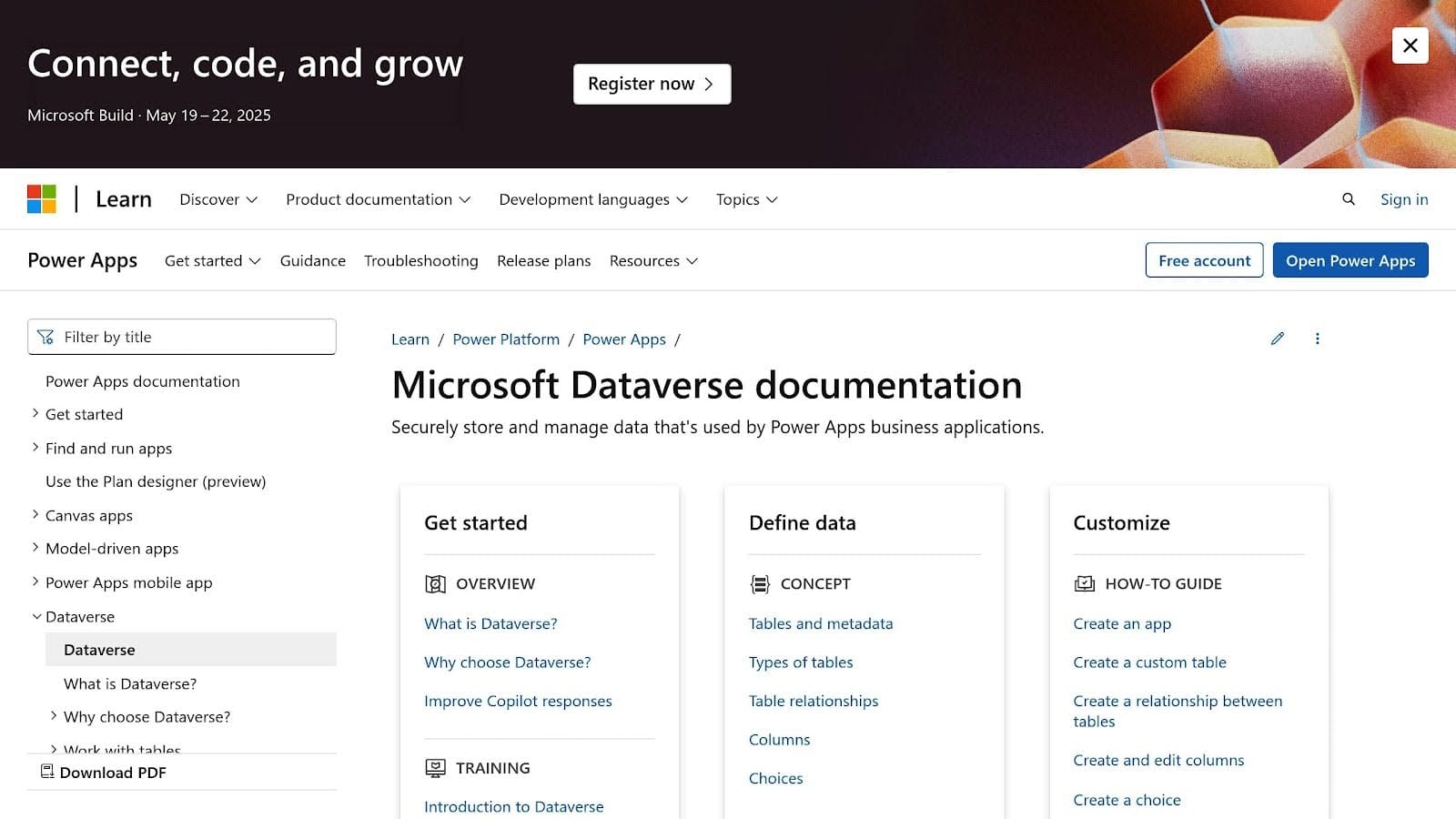Offline Data Sync for Field Operations

Offline data sync keeps field teams productive even without internet access. It allows users to work with local copies of data, make updates, and sync changes automatically once reconnected. Here’s why it matters:
- Work Anywhere: Teams can access and edit critical project data in remote or low-connectivity areas.
- Reduce Errors: Syncing ensures data accuracy and minimizes manual entry mistakes.
- Boost Efficiency: No downtime due to connectivity issues, keeping operations smooth.
Key Features:
- Local Storage: Save maps, forms, and documents offline.
- Automatic Sync: Updates are queued and synced when online.
- Conflict Management: Resolves data discrepancies with rules and audit trails.
- Security: Protects offline data with encryption and role-based access.
Applications:
- Oil & Gas: Access pipeline data and safety protocols offline.
- Renewable Energy: Update inspection logs for wind and solar sites.
- Field Sampling: Record sample data and locations in remote areas.
Offline sync transforms fieldwork by enabling uninterrupted operations, accurate data capture, and secure workflows. Platforms like Matidor simplify setup and ensure reliable syncing for field teams.
Technical Components
Local Data Storage
Reliable local data storage is a game-changer for field teams, especially when working in areas with limited or no connectivity. By keeping secure copies of critical project information on their devices, teams can continue their work seamlessly. Key elements of local storage include:
- Project Data Cache: This stores essential materials like maps, forms, and reference documents, ensuring they’re always accessible.
- Data Queue System: Captures new entries and any changes made offline, holding them until a connection is available.
- Version Control: Tracks edits and updates to prevent data loss and maintain consistency.
After storing the data locally, the next step is syncing it with a central system for broader accessibility.
Sync Methods
When a connection is restored, efficient synchronization ensures that offline data integrates smoothly with the central database. Modern sync techniques focus on reliability and efficiency, such as:
- Automatic Detection: Constantly monitors for network availability, kicking in as soon as a connection is established.
- Smart Sync: Gives priority to critical updates while efficiently managing bandwidth.
- Background Processing: Handles syncing tasks quietly in the background, allowing users to continue working without interruptions.
The synchronization process generally unfolds in three steps:
- Connection and Change Detection: Establishes a stable connection and identifies updates made offline.
- Data Transmission: Transfers updates securely to the central system.
- Confirmation: Verifies that all changes are successfully synchronized.
Platforms like Matidor make this process seamless, allowing users to access and modify project data offline. Once a connection is available, these platforms automatically sync updates, ensuring nothing is missed and the central database stays up-to-date.
Managing Data Conflicts
- When offline and central data don’t match, resolving conflicts becomes critical to maintaining accuracy. A structured approach to conflict management includes:
- Keeping a detailed audit trail of all updates, which helps with manual reviews when more complex conflicts arise.
Setup and Deployment
Data and Workflow Setup
Planning for offline data sync is crucial to ensure your field teams can keep working even when connectivity is spotty. Start by identifying the essential offline data your team will need, like GIS maps, custom forms, or key reference materials.
Here are the main configuration steps:
- Data Structure Configuration: Use project templates that include predefined fields, custom forms, map layers for offline access, and document libraries.
- Workflow Optimization: Set up processes for offline data capture, prioritize updates, manage file sizes, and enable automatic syncing once connectivity is restored.
Matidor’s customizable templates and offline mode make it easier to set up and manage these workflows efficiently.
Data Protection
When working offline, protecting sensitive data is non-negotiable. Many modern field service platforms employ advanced encryption techniques, such as AES-256, to secure data stored locally on mobile devices.
Key security measures include:
- Device-level encryption to safeguard stored data.
- Access control using role-based permissions to limit who can view or edit information.
- Automatic logout after periods of inactivity to prevent unauthorized access.
- Remote wipe capabilities to erase data from lost or stolen devices.
Platforms like Matidor come equipped with these features, ensuring your field data stays secure even in offline scenarios [1].
System Testing
Testing your system is essential to ensure everything works as intended. A structured testing protocol should cover different phases:
| Test Phase | Focus | Success Criteria |
| Initial Setup | Data structure and permissions | Templates load correctly; roles are accurate. |
| Offline Operation | Data capture and storage | Forms function offline; files save properly. |
| Sync Performance | Data transfer and recovery | Changes sync without errors; no data loss. |
| Security Validation | Encryption and access controls | Data remains secure; permissions work. |
Field teams should also test performance under various conditions, such as:
- Areas with poor or intermittent connectivity.
- Different mobile devices and operating systems.
- Handling diverse data types and file sizes.
- Scenarios with multiple users accessing the system simultaneously.
Regular testing, like monthly system checks, can help catch issues before they disrupt operations. Solutions can be tailored for field operations, simplify the testing process and enhance confidence in your offline workflows.
Power Apps Dataverse Offline

Industry Examples
Building on the technical strengths previously highlighted, let’s explore how offline data sync plays a crucial role in transforming field operations across various industries.
Pipeline Inspection Data
Pipeline inspections demand thorough data collection across extensive networks, often in remote locations where connectivity can be unreliable.
With offline data sync, inspectors can:
- Access essential resources like pipeline schematics and inspection checklists.
- Record findings effectively, including photos and detailed annotations.
- Document maintenance needs directly on-site.
- Update asset conditions seamlessly, even in real-time once connectivity is restored.
This ensures all critical information is captured accurately without delays, enabling smoother operations.
Solar and Wind Site Data
Renewable energy site assessments involve gathering a vast amount of data from geographically dispersed locations. Field teams often analyze environmental and structural factors for potential installations.
For example, a wind farm assessment might look like this:
| Assessment Phase | Offline Data Needs | Sync Advantages |
| Site Survey | Topographical maps, wind measurement data | Instant recording of site metrics |
| Environmental Impact | Species tracking forms, habitat details | Quick documentation of findings |
| Infrastructure Planning | Access road layouts, equipment specifications | On-the-spot updates for planning |
This process ensures uninterrupted data capture and allows teams to work efficiently, even in isolated areas.
Field Sample Collection
Environmental services teams often gather samples and related data in remote locations where internet access is spotty or unavailable. Accurate and detailed documentation is critical for maintaining compliance and ensuring a proper chain of custody.
Offline data sync enables field teams to:
- Pinpoint exact sample locations using GIS coordinates.
- Log collection methods and conditions for future reference.
- Attach supporting materials, such as photos and detailed field notes.
- Track chain of custody to maintain regulatory compliance.
Summary
Offline data synchronization plays a key role in ensuring smooth and reliable remote data management. Field teams experience fewer errors, maintain steady productivity, and stay compliant with necessary regulations.
Here’s a quick breakdown of how local storage and effective sync methods contribute to these outcomes:
| Operational Area | Benefits | Impact |
| Data Accuracy | Prevents double entry and transcription errors | Minimizes costly mistakes and rework |
| Team Efficiency | Supports uninterrupted work, even without connectivity | Increases productivity for field teams |
| Compliance | Keeps detailed records and maintains chain of custody | Helps meet regulatory standards effectively |
These advantages directly enhance field operations. With offline mode, teams can update project data even in off-grid areas. Once reconnected, automatic synchronization ensures everything stays consistent and reliable.
Mobile offline capabilities are a game-changer for fieldwork, especially in remote areas. Whether it’s pipeline inspections, environmental sampling, or site assessments, teams can carry all project details, access critical data on-site, and update records without delays.
This shift toward seamless, data-driven operations is already proving its value in the field.
FAQs
How does offline data sync help improve accuracy and prevent errors during field operations?
Offline data synchronization allows field teams to work with the most current and accurate information, even in remote areas without internet access. This reduces the chances of mistakes caused by outdated or missing data and keeps everyone on the same page.
When a connection is re-established, data syncs automatically, cutting down on manual tasks and simplifying workflows. This process ensures records stay accurate and helps field operations run more smoothly and efficiently.
How does Matidor ensure the security of offline data during field operations?
Matidor takes the safety of your offline data seriously by using strong encryption methods to safeguard sensitive information, even when your device isn’t connected to the internet. This means the data stored on your devices stays protected and out of reach from unauthorized access.
When your device reconnects to the internet, all offline data is securely synced with Matidor’s servers through encrypted communication channels. This approach not only preserves data accuracy but also aligns with top-tier security standards, ensuring your information remains protected throughout your field operations.
How does the system handle conflicts between offline data and central data?
When offline data doesn’t align with the central database, the system employs a conflict management process to maintain accuracy and consistency. This process pinpoints conflicting entries and offers users straightforward options for resolution.
Depending on the situation, users can decide to keep the offline changes, stick with the central data, or combine both. This approach helps ensure field operations run smoothly without compromising the integrity of the central database.